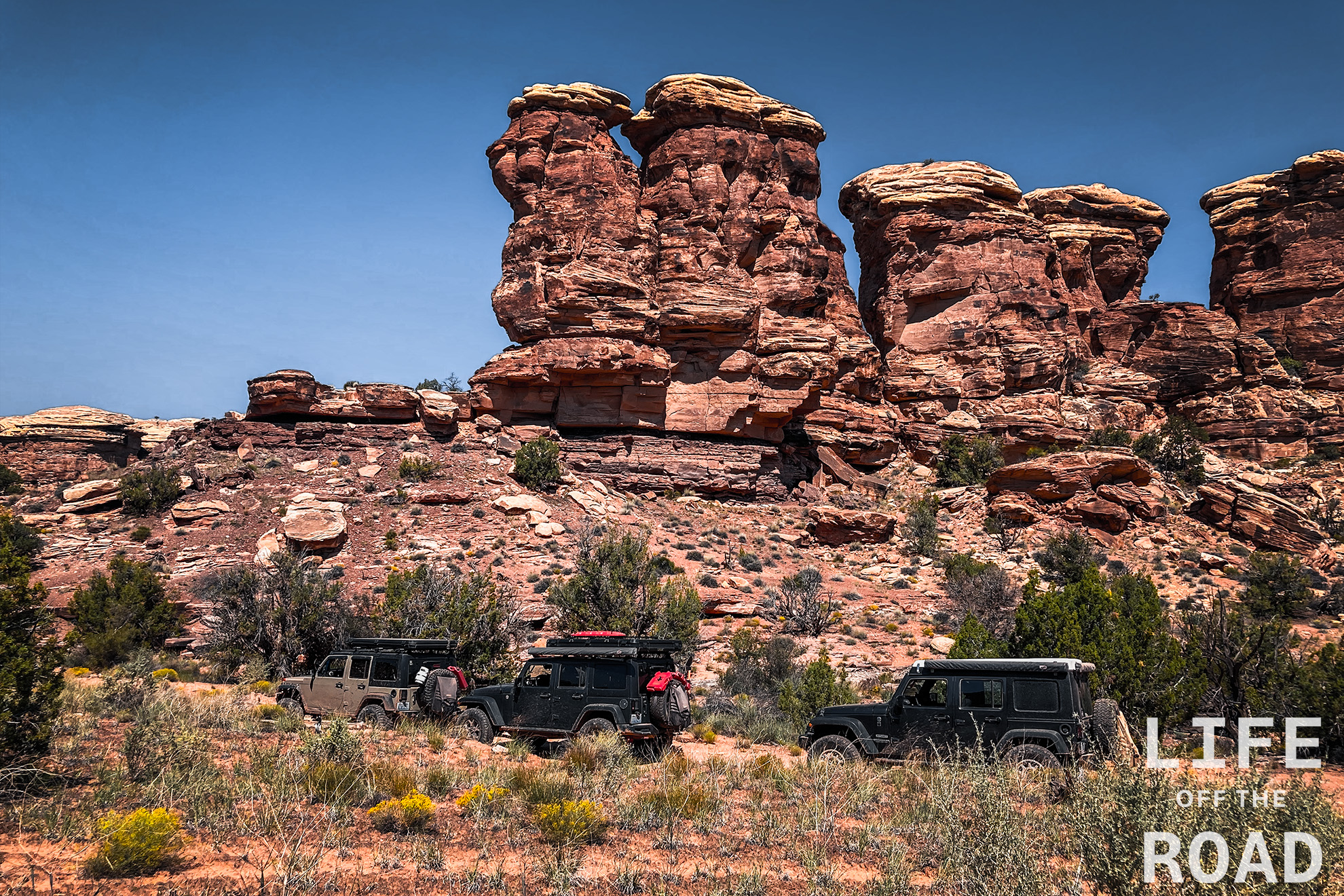Elephant Hill is a Jeep Badge of Honor trail in Canyonlands National Park. It is 1 1/2 hours outside of Moab, so not nearly as popular, as the Moab trails. That being said, Elephant Hill was my favorite trail, and not one to be missed if you do not mind the drive. A permit is required for Elephant Hill, and the Park Service limits permits to 24 vehicles per day with a maximum group-size of three vehicles. The trail is about seven miles long, with most of the fun occurring in the first three miles. You know a switchback is tight, when you have to perform a three-point turn in a Jeep! But then the switchbacks got even tighter, requiring you to back down the trail until you reach an area wide enough to turn around. And you get to back up the trail, on the way back! That was a first, for me. The rest of the trail is standard rock benches and ledges, wash crossings, and a sandy valley floor. There is also a short spur road that runs out to the confluence of the Green and Colorado rivers.
Category: Utah
These are posts and images from Utah
-
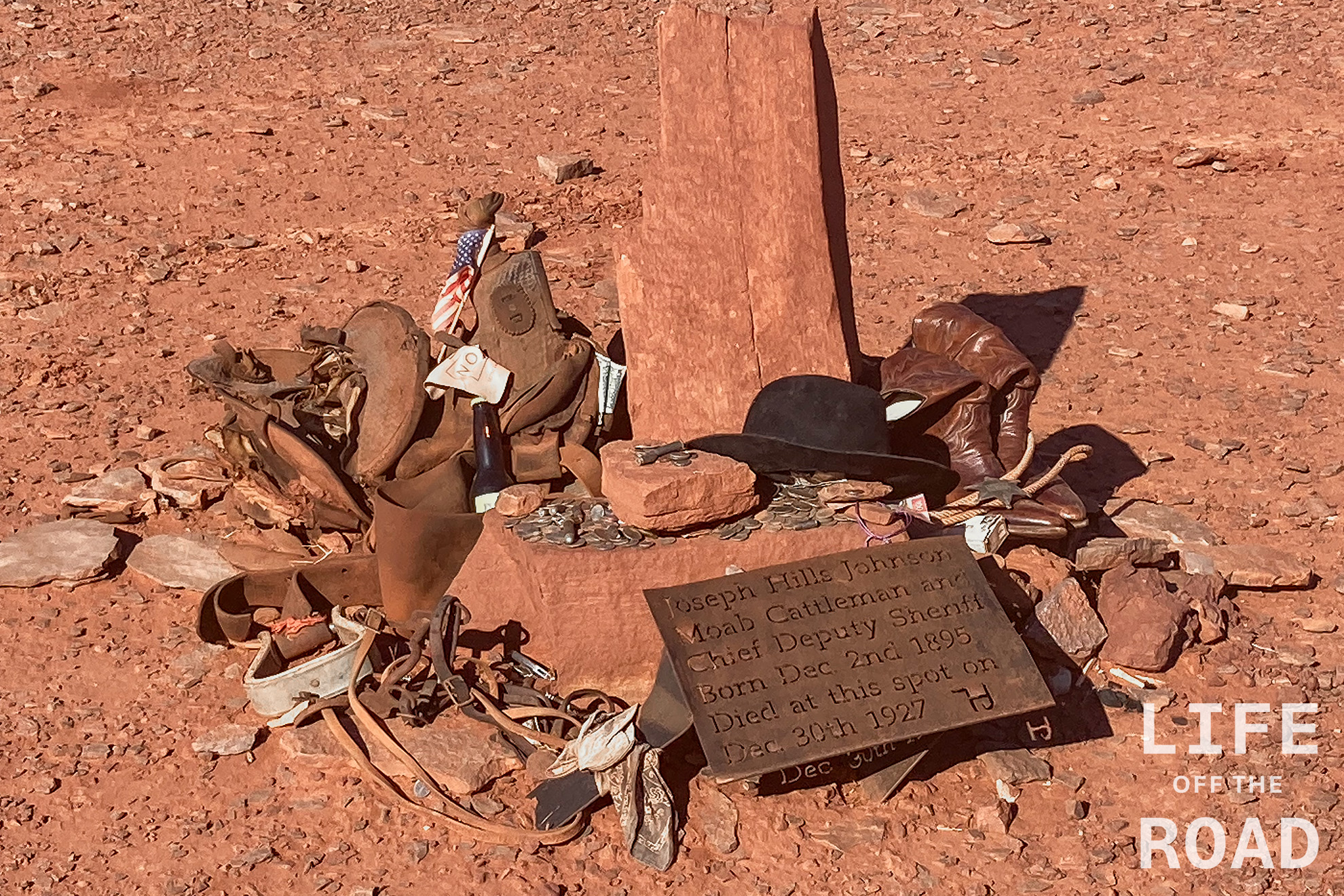
Sheriff Joseph Hills Johnson
We had spent most of the day grinding through 38 miles of Lockhart Basin Road, which connects Canyonlands National Park, to Moab. Some fifteen miles shy of Moab, we were ready to call it a day and get some rest, and we did so on the Colorado River, between Chicken Corners and Hurrah Pass. The next morning, we could not go on into Moab without checking-out Chicken Corners, and I am glad that we decided to make some time to do that. It is an easy trail, but with enough rock ledges and off-camber views 1,000-feet down to the Colorado River, that it is a really scenic and interesting drive. Chicken Corners is less than five miles long, so it is a quick drive. The “chicken” part comes at the end, where there is a narrow walking path along a 1,000-foot cliff, to the overlook area. Don’t be a chicken! This memorial to Joseph Hills Johnson sits near the beginning of Chicken Corners, and marks the spot where Johnson’s horse fell, “killing him instantly” according to a newspaper account. He is buried in Moab, at Grand Valley Cemetery on Sand Flats Road.
-

Lockhart Basin Road
Lockhart Basin Road connects Canyonlands National Park to Moab and is a designated alternate expert section of the Utah Backcountry Discovery Route. This road was no joke. Lockhart Basin Road was my introduction to rock crawling. I thought that I had rock crawled in my Jeep before, but I was greatly mistaken. It is an amazing route, as you might imagine, since it runs along Canyonlands. It begins in Canylands as a nice, wide, graveled road that gradually becomes narrower as you wind your way up into the rocky canyons of Bears Ears National Monument. Towering red cliffs on the right, vast expanses of picturesque Canyonlands on the horizon, to the left. At some point, and it sneaks up on you quickly, the road turns into a series of boulder-strewn, narrow passages, that will make you wonder what you have gotten yourself into.
-
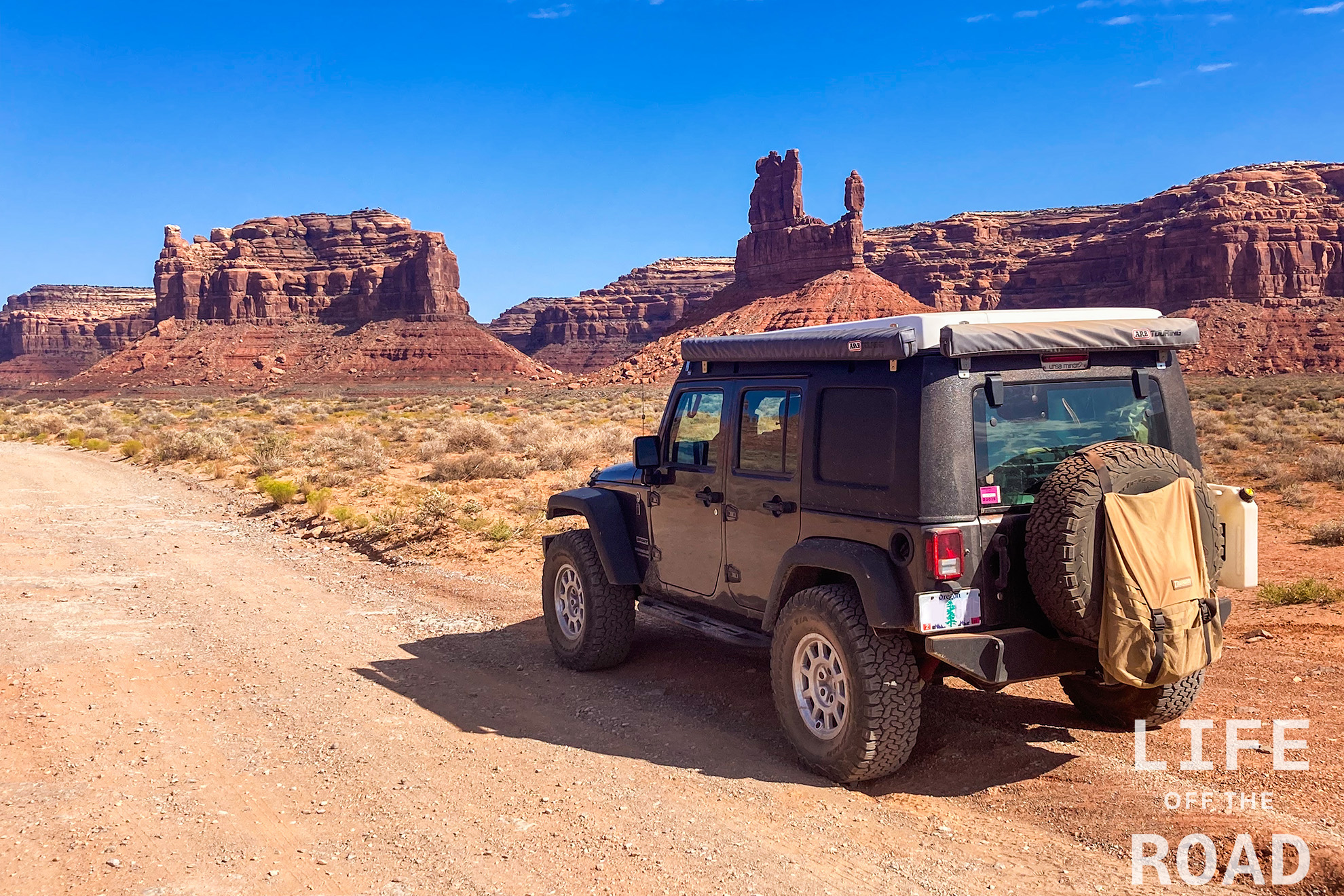
Valley of the Gods
Valley of the Gods does not get near the attention of neighboring Monument Valley, but that is part of the charm of this southern Utah wonderland. Particularly during the week, you might only see a handful of other people along the 17-mile route cutting through the valley. It is BLM land, so there will be campers, but mostly on weekends. There are no services and no campfires allowed.
-
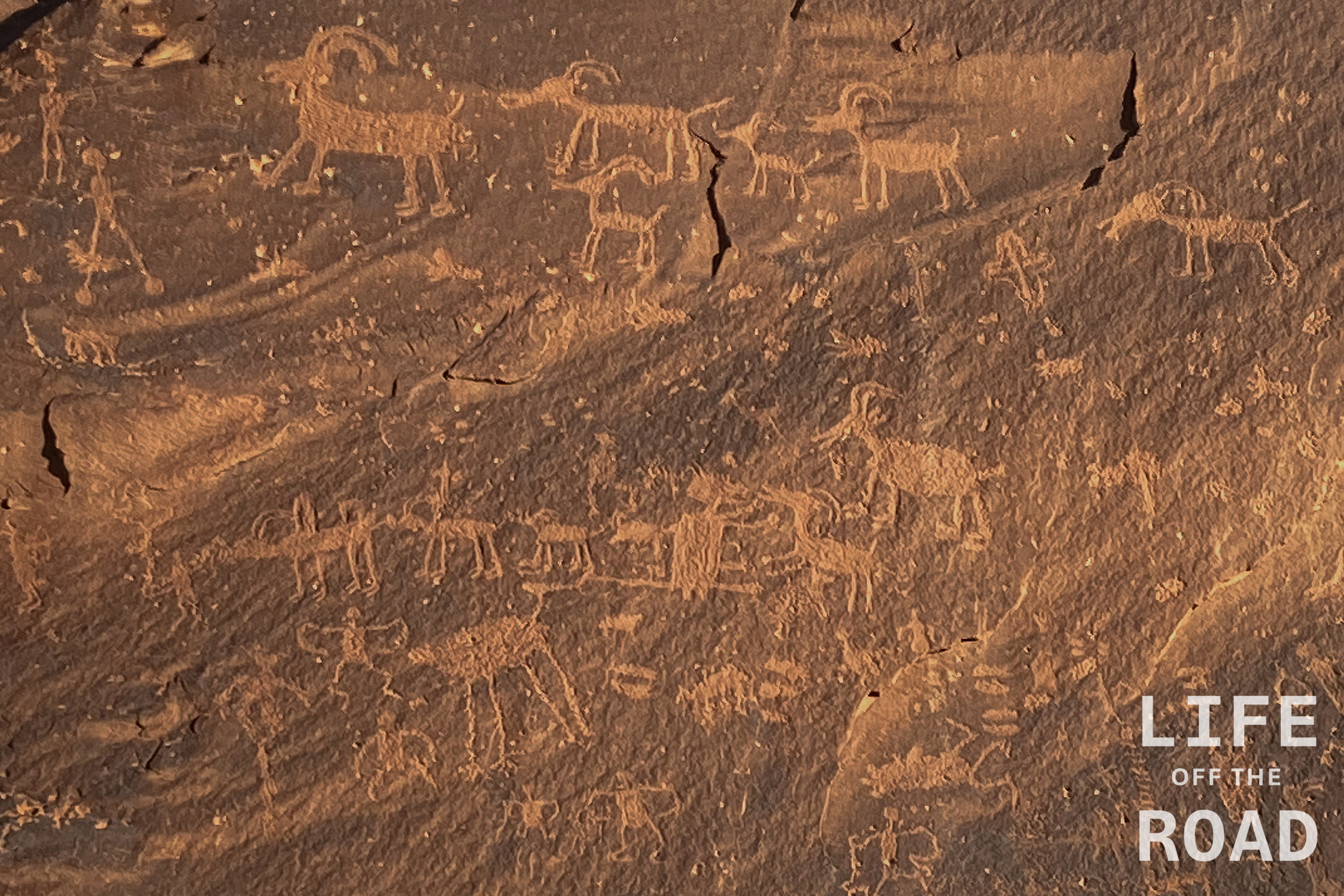
Sand Island Petroglyphs
The Sand Island Petroglyphs are a short drive south of Bluff, Utah on highway 191. The large rock panel, some 100 yards long, contains petroglyphs, or rock carvings, from a period of about 2,500 years to the “great pueblo” period, 800 years ago. This site and Newspaper Rock on highway 211 towards Canyonlands National Park, are two very large and easily accessible petroglyph panels.
-
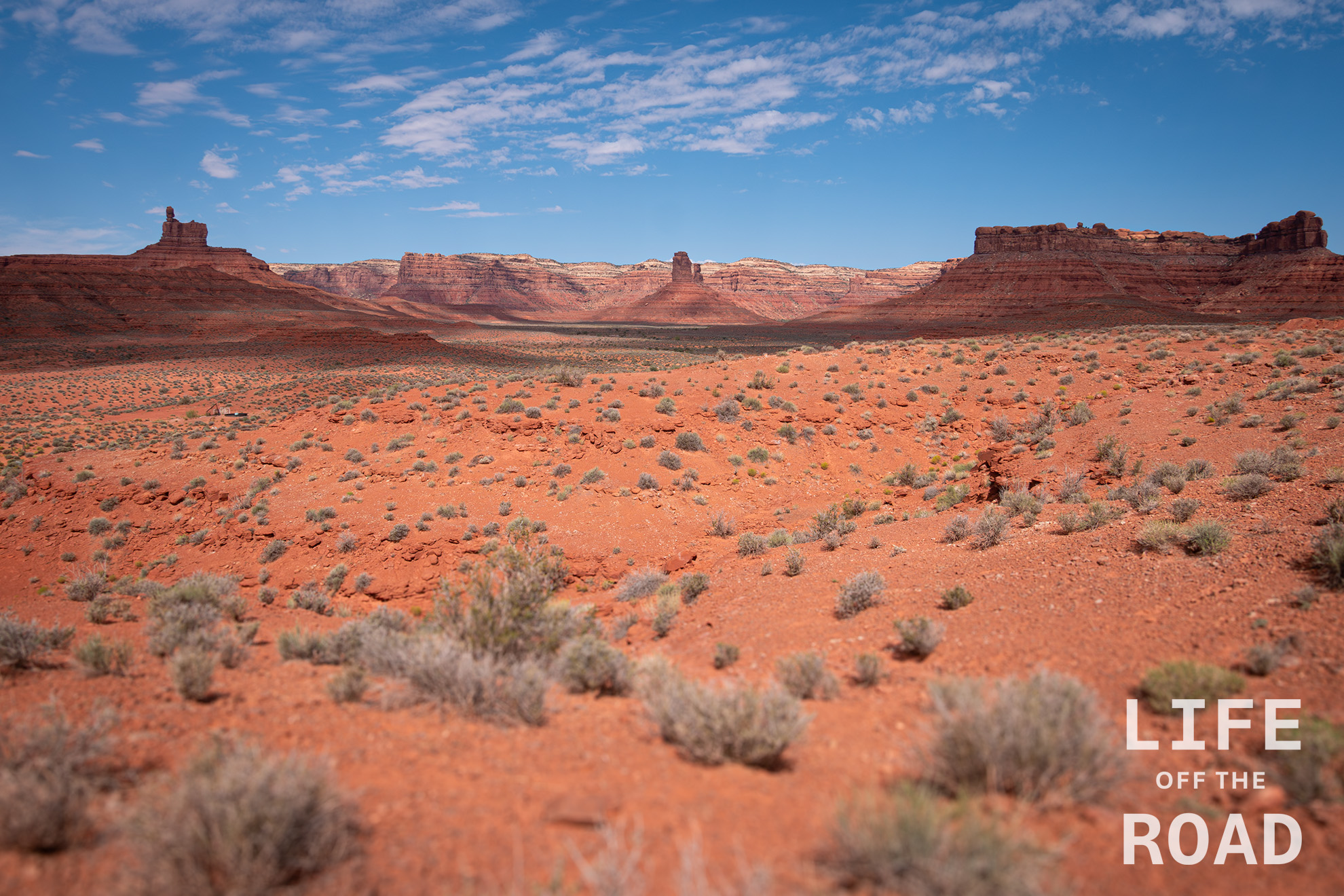
Valley of the Gods
Valley of the Gods is a great little park located south of Bluff, Utah off highway 163. It is also accessible from the west via highway 261. A seventeen-mile road runs through the park, connecting the two highway entrances. The road is accessible to most vehicles, but like many semi-improved roads in the southwest, is crosses several washes that will challenge any vehicle that does not have ground clearance for off-road travel. I made several trips through the park. Even though it is smaller than the more popular locations, like Monument Valley or Canyonlands, it is no less stunning and I found myself stopping every five minutes to take-in a new sight, or get a different perspective on a feature.
